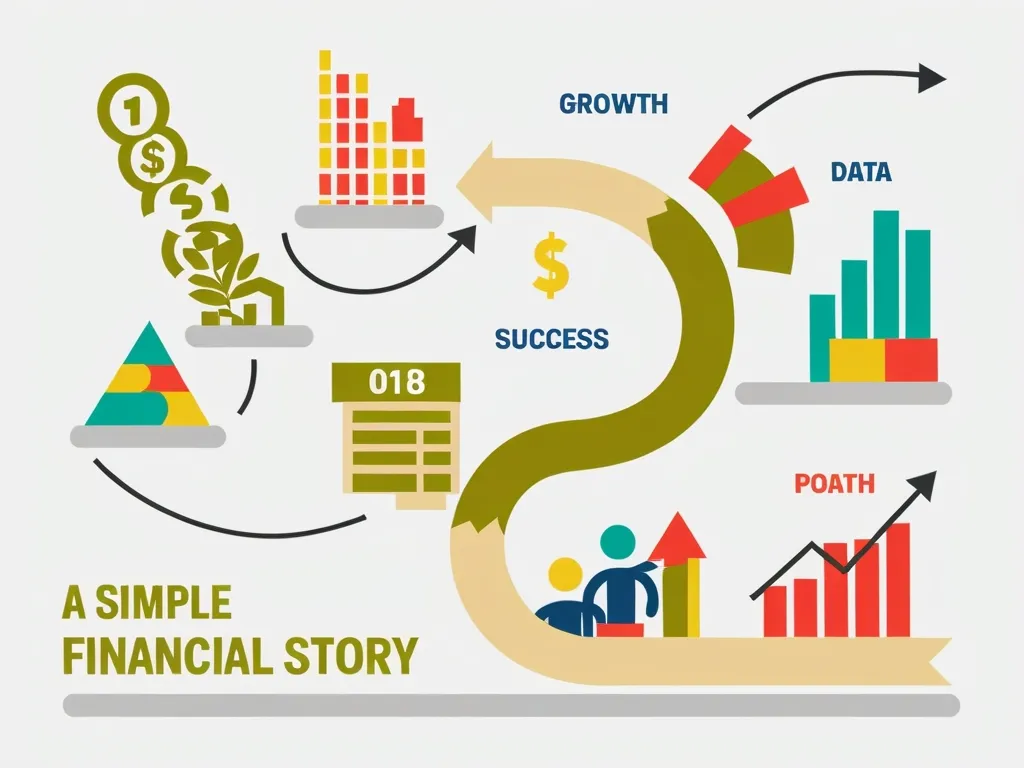When it comes to investing, the traditional approach often revolves around spreadsheets, financial models, and a sea of numbers. However, there’s a more engaging and insightful way to approach your investment strategy: financial storytelling. This method transforms your investment decisions from mere data analysis into a compelling narrative that includes characters, plots, and arcs.
The Power of Narrative in Investing
Financial storytelling is not about fabricating tales or glossing over facts; it’s about weaving a comprehensive story around each investment. This narrative includes the business’s origin, its struggles, and its triumphs, all of which frame the underlying economic fundamentals and market position. By doing so, you engage your creative instincts to visualize the journey of a company’s growth or decline.
Imagine you’re reading a novel where the protagonist is a company navigating the complexities of the market. Each chapter represents a different phase in the company’s life cycle – from its humble beginnings to its current status and potential future. This storytelling lens allows you to see stocks not just as mere tickers but as narratives in the making, each with a unique storyline that offers insights into future potential.
Understanding the “Why” Behind the Numbers
Financial storytelling begins with a deep understanding of what the business cares about and what drives its growth. It involves extracting value from financial metrics and communicating them effectively. For instance, when looking at a company’s financial statements, it’s not just about the numbers; it’s about the story those numbers tell. What were the key achievements and challenges during the reporting period? How do these elements fit into the company’s long-term goals and vision?
Consider the example of Zendesk, a company that successfully navigated its pre-IPO journey through effective financial storytelling. Alan Black, the former CFO of Zendesk, emphasized the importance of explaining why something is happening, not just what happened. This approach helps stakeholders understand the strategic decisions and underlying drivers of financial performance, making the information more relatable and easier to understand.
Crafting the Financial Story
To craft a compelling financial story, you need to start with the big picture. Outline the overarching themes of your narrative, including the key achievements, challenges, and strategic decisions made during the reporting period. Use financial data as your plot points to illustrate progress, demonstrate the impact of strategic decisions, and highlight areas of growth and challenge.
Visual elements such as graphs, charts, and infographics are crucial in making the story more engaging and easier to understand. These tools can turn complex financial data into digestible and visual stories, helping stakeholders grasp key financial trends and patterns. For example, using a storyboard to visualize the data can boost collaboration and storytelling, making the information more relatable and accessible.
Humanizing the Story
Financial storytelling is not just about numbers; it’s also about the people behind those numbers. Connecting financial performance to the individuals and communities affected by the company’s decisions adds a human touch to the narrative. Share testimonials or case studies that demonstrate the company’s values and commitment to stakeholders. This approach helps build trust and credibility with your audience.
The Role of Technology in Financial Storytelling
Technology plays a vital role in financial storytelling. The right tools are essential for gathering, analyzing, and presenting financial data effectively. For instance, platforms like Mosaic connect to various systems such as ERP, CRM, and HRIS, creating an analytic integration that helps measure how the business is performing. These tools provide real-time insights, allowing you to build your financial model and illuminate the changes throughout your financial story.
Engaging Stakeholders
Financial storytelling is a powerful tool for engaging stakeholders, whether they are investors, employees, or customers. By transforming financial disclosures from static documents into dynamic narratives, you can increase stakeholder engagement and confidence. A coherent story that explains the numbers and outlines a clear vision for the future can boost investor confidence and support.
For example, Warren Buffett and Howard Marks are renowned for their ability to communicate complex financial information through compelling narratives. Their stories have built trust with their investors, giving them a significant competitive advantage. This trust has allowed them to maintain permanent capital, even during bear markets, when other investors might have withdrawn their funds.
Anticipating the Future
Financial storytelling is not just about the past and present; it’s also about anticipating the future. By understanding the narrative of a company, you can identify pivotal moments that could shape its path. This involves forecasting future trends and market dynamics, but it’s crucial to balance this with a realistic understanding of the uncertainties involved.
As Morgan Housel put it, “Every investment price, every market valuation, is just a number from today multiplied by a story about tomorrow.” This highlights the importance of combining data with narrative to form a comprehensive investment thesis. The narrative answers the question “why should we care?” and provides context to the facts, making the investment more relatable and understandable.
Maintaining Consistency
Consistency is key in financial storytelling. The story should evolve over time but remain rooted in a similar set of metrics and goals. This helps stakeholders understand the narrative and see how the company is overcoming challenges and what it has on the horizon. Changing the story too drastically from quarter to quarter can confuse stakeholders and undermine the credibility of the narrative.
Real-World Examples
Financial storytelling can take many forms, depending on the audience and purpose. For instance, in investor presentations, structuring data to highlight growth and future potential is crucial. In annual reports, using narratives to explain yearly financial performance and strategic direction helps communicate the company’s financial health and future outlook to shareholders.
Budget proposals also benefit from financial storytelling by justifying financial requests and connecting them to expected outcomes. This approach helps stakeholders understand how the financial data impacts the overall business success and makes the information more accessible.
Conclusion
Financial storytelling is a transformative approach that turns numbers into a compelling narrative, making financial information more engaging, transparent, and meaningful. By integrating storytelling into your investment strategy, you can connect with stakeholders on a deeper level and make more informed decisions.
In the world of investing, where uncertainty is a constant companion, financial storytelling provides a nuanced perspective that goes beyond traditional analysis. It’s about seeing stocks as narratives in the making, each with its unique storyline that can offer insights into future potential. By embracing this approach, you can turn your investment strategy into a dynamic and engaging story that resonates with everyone involved.






